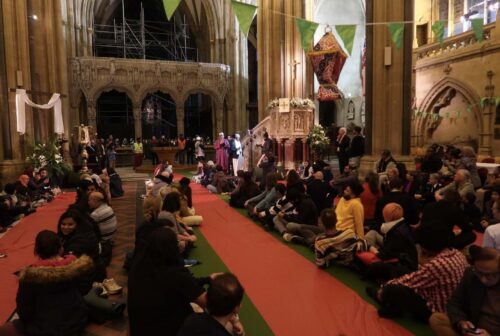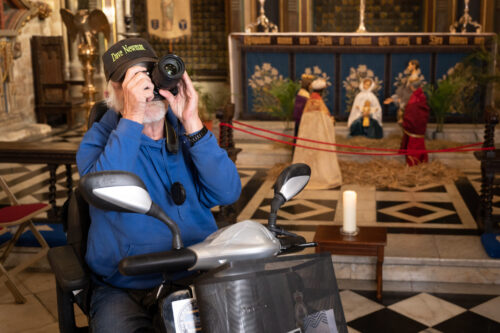Experience Conservation in Action as Bristol Cathedral Restores 14th Century Chapel.
Bristol Cathedral, in collaboration with Nick Cox Architects, has commenced a significant restoration project to improve access to the Seafarers Chapel. The Seafarers’ Chapel requires urgent restoration to stop its deterioration, improve its safety and enhance the Cathedral’s accessibility for a wide use by visitors and congregation. In addition to important restoration repairs, the chapel is not utilised to its full potential and feels more like a corridor than a place of worship. This project is part of our wider strategy to improve our accessibility and welcome. Cliveden Conservation has been entrusted to undertake a major phase of repairs to improve access to this area of the building, creating a safer, more level floor and step-free access. The project commenced in April with thorough surveys and plans by a Cliveden archaeologist and is due for completion by the end of Summer, prior to works re-commencing on the Cathedrals major organ restoration project.
Accessibility is at the heart of this projects aims and new ramps will be installed along with a hearing aid loop, as part of the Cathedral’s wider plan. The project aims to address structural issues and improve accessibility by replacing degraded Pennant flooring with locally sourced stone from the Forest of Dean. In line with the Cathedral’s conservation ethos, materials are being repurposed and recycled, benefitting other local churches and organisations.
The chapel holds a variety of well-crafted wall monuments and leger stones paving the floor. Marble memorial tablets and monuments within the chapel will undergo careful conservation and repair, with some being lifted prior to reinstatement. Inside the Seafarers’ chapel are memorials which make references to Jamacia, Barbados and families who benefitted from the trade of enslaved people. Bristol Cathedral is undergoing a wider temporary exhibition titled “All God’s Children”, seeking to understand the Cathedrals connections to the historic trade of enslaved people. There has been extensive consultation with visitors and a range of local groups. Bristol Cathedral is committed to restoring the chapel with integrity and sensitivity.
Tom Flemons, Director and Bath Workshop Manager at Cliveden Conservation, expressed enthusiasm for the collaboration, stating:
“We are delighted to be working with the Bristol Cathedral team including Nick Cox Architects on this project. This is a highly sensitive conservation project which will involve us working with an archaeologist to replace the damaged floor. Repairing and reinstating the floor, including its marble memorial tablets will require precision and skill to replicate the previously re-laid floor within the 14th century chapel.”
As the Cathedral’s Clerk of Works, I have the immense privilege of witnessing the ongoing conservation work in the Seafarers’ Chapel first hand. It’s exciting to know the newly laid stone will enhance safety and accessibility for all who worship at, visit, and experience the Cathedral, and at the same time, knowing we’ve done as much as possible to preserve and repair
our historic floor monuments. The Conservation in Action Day offers the public a unique chance to witness the intricate process of restoring our
historic building and even try their hand at some of these specialised skills too!”
Everyone is invited to a Conservation in Action Day at Bristol Cathedral on Thursday 22 August, featuring the expertise of Cliveden Conservation. Attendees can meet the conservation team, explore ongoing restoration work in the Seafarers’ Chapel, and participate in stone cutting and mini stone carving activities. The event runs from 10:00am to 2:00pm, offering interactive tours, workshops, and hands-on experiences suitable for all ages.
Milestones and updates: Last Updated on 15 August
- Monuments are being restored both on and off site.
- Archaeological surveys have been carried out and surrounding areas have been prepared and protected.
- Degraded pennant stone has been carefully removed and donated to local associations.
- The subfloor has been inspected and levelled.







